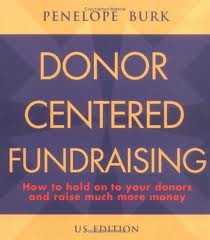 Welcome to O.D. Fridays at DonorDreams blog. Every Friday for the foreseeable future we will be looking at posts from John Greco’s blog called “johnponders ~ about life at work, mostly” and applying his organizational development messages to the non-profit community.
Welcome to O.D. Fridays at DonorDreams blog. Every Friday for the foreseeable future we will be looking at posts from John Greco’s blog called “johnponders ~ about life at work, mostly” and applying his organizational development messages to the non-profit community.
In a post titled “My Son Knows When I’m Lying,” John talks about one study that claims that people lie two or three times every 10 minutes. He uses that study to transition into talking about “microexpressions” and how our faces betray us all of the time.
John’s blog post got me thinking about how many non-profit organizations lie to their donors.
OK . . . I’m sure some of you think I’m being harsh, but I don’t necessarily mean big lies that come with legal complications. Here are a few examples floating through my head:
- “Please join our board. It only involves coming to one meeting, once a month.”
- “We do a great job at measuring our outcomes and impact, which is how we know your contribution makes a huge difference.”
- “Yes, we’re going to miss our development director something fierce, but they left to pursue a once in lifetime opportunity.”
- “We doing a great job weathering the economic downturn. We are on a good fiscal footing.”
Little white lies. We tell donors these things all the time. In fact, the list goes on and on (but I certainly hope it isn’t anywhere close to the two to three lies every 10 minutes that John referenced in his blog post). We do this for any number of reasons including:
- We don’t want to worry or concern our donors.
- We fear that if they knew the truth, they’d stop donating to us.
- A wise person once said, “If you like sausage, you don’t want to know how it is made.” 😉
With all of this being said, John’s blog post also got me thinking that about how donors probably see right through all of it. If this is true, then it begs the questions:
- What do white lies do to our organizational credibility?
- Do our microexpressions betray us enough to have an impact on donor retention rates?
- Is there a better way to steward donors where we can avoid little white lies and be more transparent all the while cultivating a deeper sense of donor engagement?
I ask lots of questions today and offer no tips, tricks or solutions; however, I don’t think there are easy answers that I can offer you. Regardless, I suspect many of you have thoughts on this subject. How are you working hard at being more transparent and honest with your donors? What strategies and tactics do to you use? Please scroll down and share a quick thought or idea in the comment box below. We can all learn from each other.
Here’s to your health!
Erik Anderson
Founder & President, The Healthy Non-Profit LLC
www.thehealthynonprofit.com
erik@thehealthynonprofit.com
http://twitter.com/#!/eanderson847
http://www.facebook.com/eanderson847
http://www.linkedin.com/in/erikanderson847





















